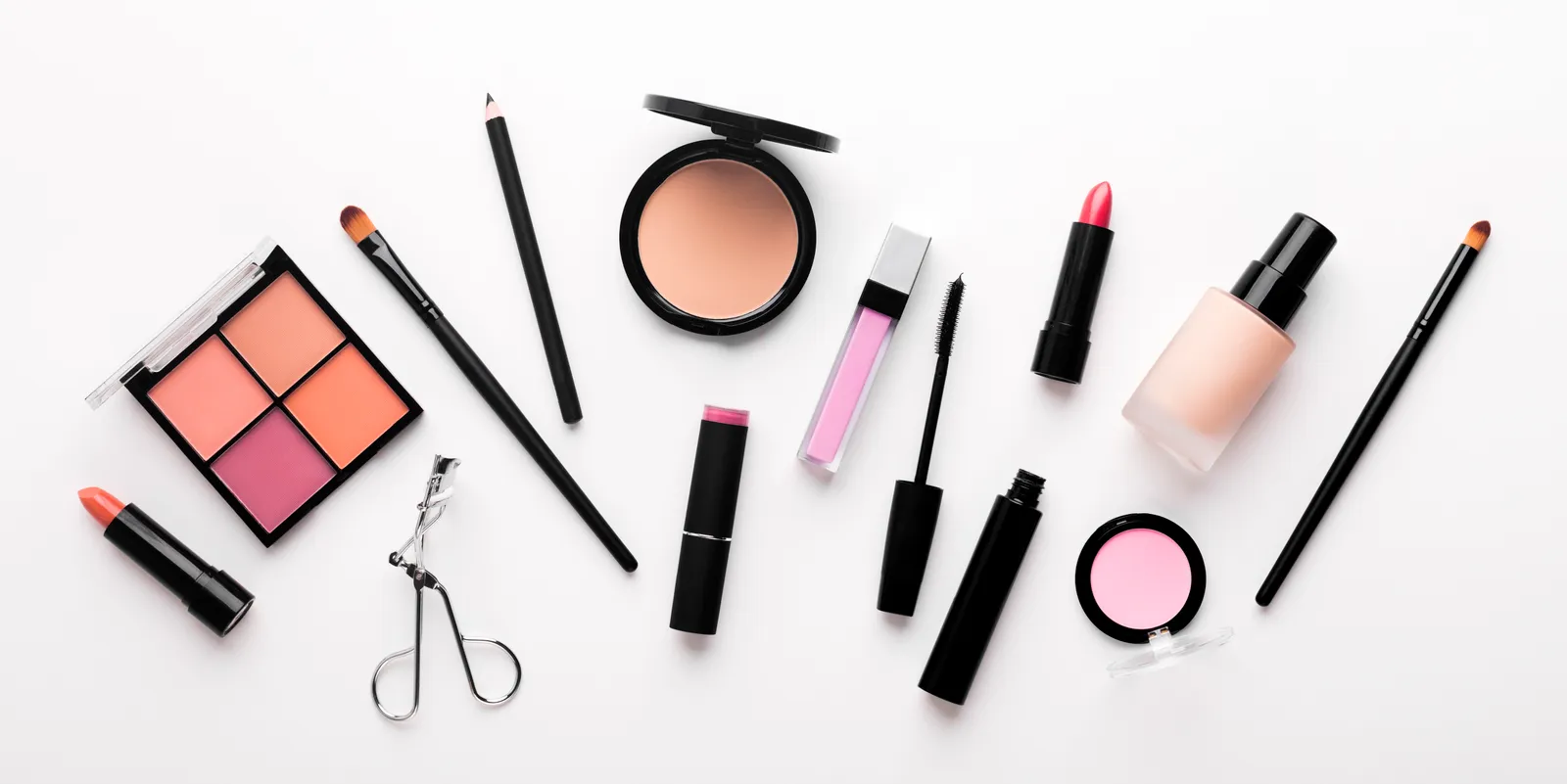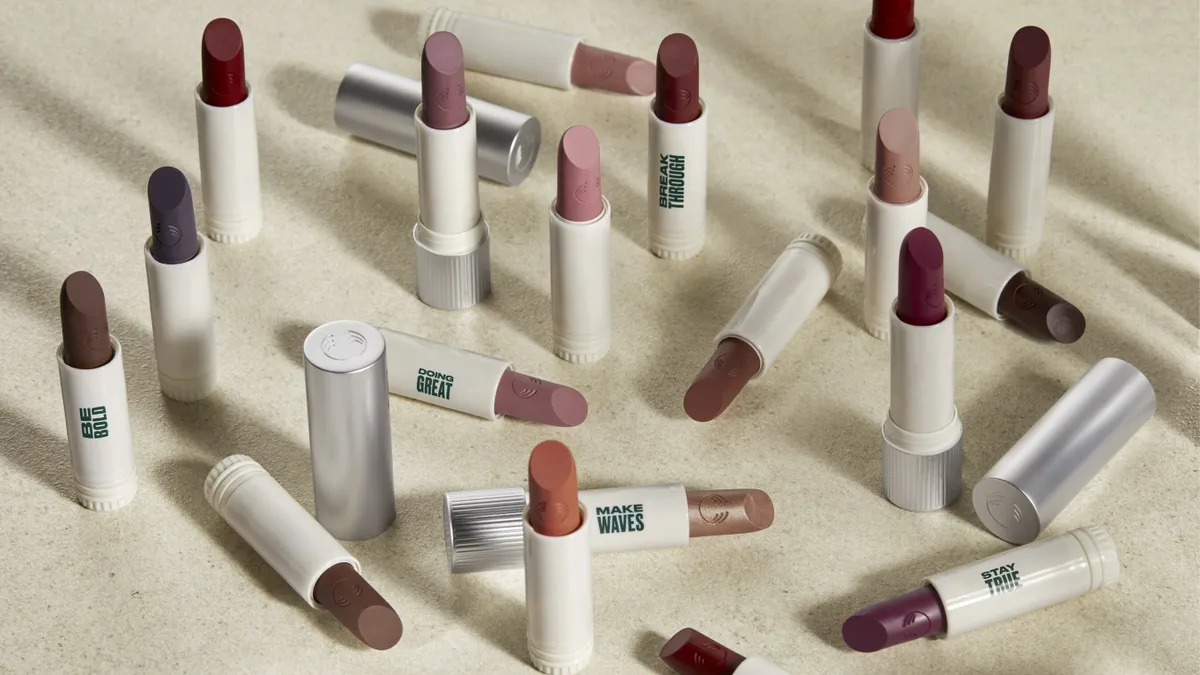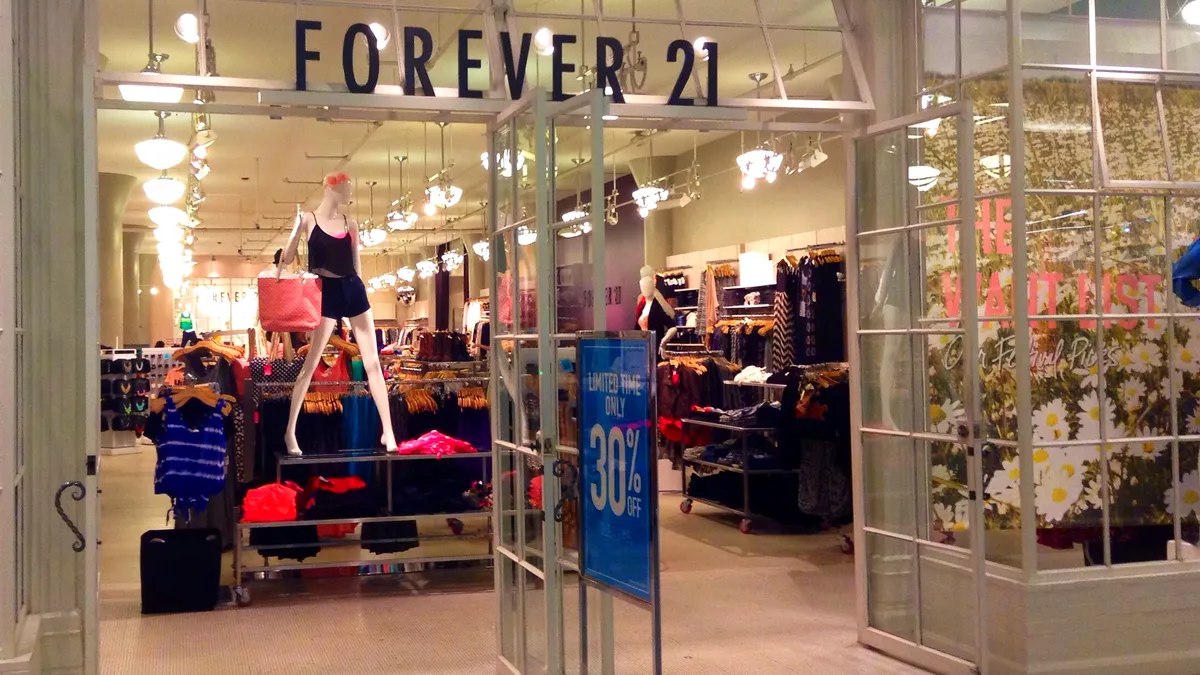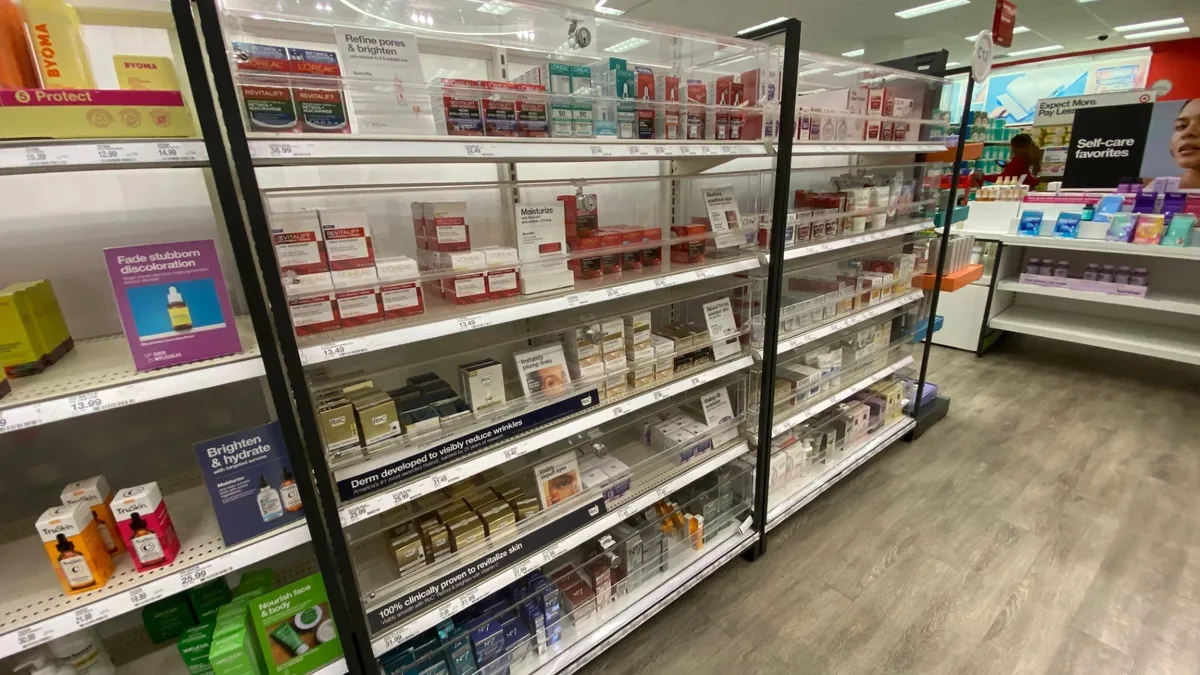When Heather Smith was preparing to launch bareLUXE Skincare in 2021, she was "mortified” by her plastic packaging usage. "I said I'm not going to launch a brand if I'm just going to be adding to the problem."
Her solution was offering refills that come in recyclable pouches to be poured into dropper bottles, and balm formulations in biodegradable (and compostable, depending on facilities) jars. Smith bills bareLUXE as an "anti-plastic activist brand."
Refillable options may be gaining traction as the the beauty industry, long criticized for its packaging waste, is looking for more sustainable packaging choices. Whether consumers will actually use them, however, is an open question.
The beauty industry is particularly challenged because it relies on many small parts and mixed materials which do not typically get sorted in standard recycling systems. And products often come with layers of packaging. For example, the actual cosmetics products typically are housed in a container, like an eyeshadow in a pan, and that container might be in a cardboard box. The box, in turn, also may be shrink-wrapped or in another type of plastic packaging.
Beauty brands at almost all price levels, with the exception of discount, are trying out refills, said Sheri Koetting, founder and chief strategist of beauty branding agency MSLK. "I think everyone is interested in doing it," she said.
While comprehensive market data is limited, sources say the the two main refillable options at the moment are pans that hold pressed powders and thin-walled plastic pods filled with product that can be popped in and out of a primary container.
There are alternatives to plastics, like fiber-based cosmetic trays or metals such as aluminum, said Brandon Frank, president of Pacific Packaging Components. Aluminum can be captured by many material recovery facilities, he said, and get recycled over and over.
One recent example: The Body Shop recently launched a refillable aluminum lipstick tube. The lipstick product itself is in a plastic twist-up tube, which slots into the aluminum case (which comes in a cardboard box).
“Convenience remains a barrier for refill programs in general, but our younger shoppers, who are cognizant of what’s at stake for the planet, have boosted our refill adoption rates,” wrote Hilary Lloyd, vice president of marketing and corporate social responsibility for The Body Shop North America, in an email. She wrote that the company is “continuing to explore different product options for refill” and said that to make this “as convenient as possible, we also are looking at new ways to offer refill, including introducing refillable options on our website.”
But the bigger picture of emissions generated along the supply chain means the choices aren't so simple. "Maybe using metals are better than plastics that we know are going to end up in a landfill from a waste standpoint," Frank said. "But then you have to look at it from a carbon emissions standpoint, and which ones are contributing more to climate change."
Designed for durability
Cosmetics were originally housed in refillable packaging, including metal pressed powder compacts, but the advent of plastic led to single-use beauty packaging becoming the standard.
Designing modern refillable packaging is not an easy task. One reason beauty packaging is so complex is because the products are complex. They need to be protected against oxidation and breakage in addition to being sanitary.
"Anything that touches your face, especially around the eyes, which are more prone to infections, there are more hygienic considerations," said Koetting.
Refillable beauty packaging must be easy to use and easy to refill, including for those with limited motor function. They also need space for labeling, since, apart from branding, ingredients and other product information must be displayed, as required by the Food and Drug Administration.
Stephanie Rowntree, global product manager with HCP Packaging, said the packaging also needs to work with production and filling lines to put the formula into the refillable containers, and some also have to be sealed. The container also ought to have a balance between aesthetics and function, she said.
"For refill, creating a pack that is ‘too beautiful to throw away’ helps to keep the pack on the consumer’s shelf, to be refilled time and time again," she said via email. However, Rowntree noted, a refill unit that's fully functional by itself runs the risk of consumers not purchasing the original product that’s meant to be refilled. "Brands lose out on the repeat business of the consumer purchasing the full pack assembly," she wrote.
The supply chain of refillables goes beyond the packaging on the shelf; it needs a product pipeline that's sustainable from a business standpoint, said Koetting, in order for refill components to be available. That requires a physical retail partner and/or an online distribution channel and more inventory space. "There's an investment that has to be made in buying into and building the system," she said.

What do customers want?
Independent brands are more willing to experiment with new packaging innovations, said Koetting, but they lack the deep pockets required. Larger, established brands that do pursue this are opting for refillables that use pods and pouches.
"It's the indie brands that are really excited and trying new things, but those are often the brands that can't afford these investments," she said.
As the founder of one of those start-up indie brands, bareLUXE's Smith wanted a better understanding of what consumers think of beauty packaging so she ran a survey.
Almost 40% of respondents said a barrier to choosing refillable skincare products was that their favorite brands don't offer that format as an option; 43% said they'd switch to refillables if their preferred brands did offer them; and 34% want the price of refillables to be lower than the original product.
"I think people are brand loyal," Smith said. "So I do think there would be an increased uptake if more brands offered them."
While the sample size was small with 153 respondents, Smith said she intends to do a follow-up with a larger sample size and more specific questions.
In the U.K., “prestige” refillable beauty products are proving popular enough to outpace the growth of prestige single-use products. They saw a 47% increase during the first half of 2022, compared to 22% for single-use, according to research from Circana.
Euromonitor International echoed this growth, with make-up and fragrance leading the segment. “Seventy-percent of beauty and personal care professionals regard an increase in refill options as a permanent in consumer habits,” it wrote in a report called “The Future of Plastic Packaging Amid Sustainability Measures.”
PPC has worked with brands that tried refillables and discovered that what looks good in theory often doesn't work well in practice, said Frank. Low reorders, sluggish growth, customer complaints and difficulty assembling and refilling are common problems.
That’s not to say it isn’t possible if certain guidelines are followed. For a reusable or refillable model to work, Frank said it needs to offer three things: convenience for the consumer, a clear functional benefit and a cheaper refill product. The consumers' responsibility is to commit to refillables by actually buying the refills. Most refillable cartridge units, he pointed out, take three to four orders before the costs balance out with the original packaging. "If any of those pieces are missing, then I don't think it'll be successful," he said.
Frank said one approach is to take a "hero" product and trial it with and without a refillable to compare how the two do in the market.
Or companies could follow the model of beauty brand Lush. The company piloted a completely packageless mascara in the U.K. last year; it launched in North America this spring as part of Lush’s Naked line of products with no or minimal packaging.
Other retailers also are making it easier for consumers to find refillable products. Target, for example, has begun to label products as part of its Target Zero sustainability initiative. This includes labels indicating which products are reusable and refillable.
BareLUXE's Smith is cautious about putting too much weight into consumers' stated intentions, considering what they say they will do and what they actually do isn't always the same. And the same goes for brands.
"I think consumers say they want more sustainable options, but they're kind of slow to adopt them,” she said, “and brands say they want to offer more sustainable options, but they're kind of slow to release them.”






















